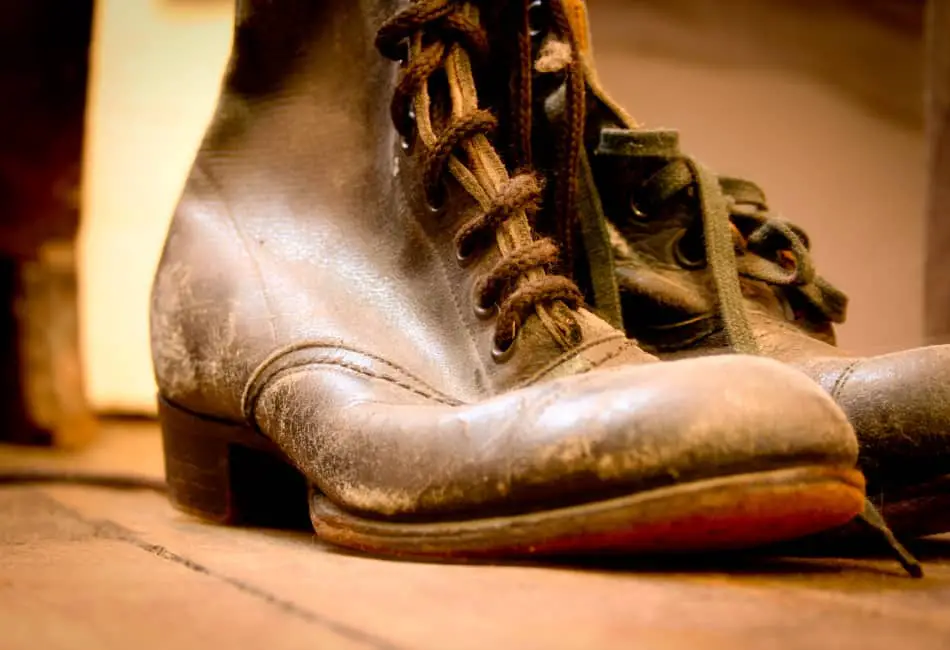What is the best way to keep your leather looking new and fresh? One of the most common questions I whenever told someone I run a leather blog was, “Why does my leather turn white?” So in this article, I am going to answer that question and give you some tips on how to maintain a good-looking leather surface.
So why does leather turn white?
- Salt Damage
- Bacteria Or Fungus
- Sun Damage
- Sweats
- Using The Wrong Leather Care Products
- Fatty Bloom
- Extra Salt Left Behind After Prickling
- Extra Salt Left Behind After Prickling
Stick around as in the remaining parts of this article, I’m going to delve deep into the reasons why leather turns white. I will also give you my favorite hacks and tips for removing and prevent leather from becoming white.
There are many reasons your leather turns white. I have seen new cars with a nice, rich brown color turn into an ugly shade of white within a year. Some of this is just due to what happens as leather ages and gets used, but some of it can be due to peculiar reasons that I’m going to be discussing below. Let’s get into it!
1. Salt Damage
One of the common ways leather turns white is through salt damage. This is usually common on leather shoes, boots, gloves, jackets, etc.
Salts are used for treating snow to help in the de-icing of the snow. This is helpful for people that have to drive cars on snowy roads during snowy conditions and pedestrians who also commute during this time. But it can be harmful to the leather that comes into contact with it.
When you wear these leather items on a snowy day and the snow has been treated with salt to help de-ice it, the salts get soaked up into your leather items and after some time, the sal begins to react with your leather turning its surface white.
This happens because salt is an alkaline substance. When the salt is absorbed into your leather, it starts to break down and destroy its molecules. The salt also reacts with the tanning agents to turn your leather surface white.
When this happens, you will notice that the area where it is white is soft and powdery. When you touch the white area, it will feel gritty like sandpaper. This means that your leather item has been severely affected by the salt.
The only way to fix the salt damage is by buying a specific leather repair kit to put in on your item.
The best way to avoid salt damage is by avoiding places where there is snow and avoid wearing your leather in snowy conditions.
2. Bacteria Or Fungus
Another cause for leather turning white is bacteria and fungus. Leather is a very porous material, which means that it will absorb things easily and can be damaged by them as well.
So when you store your leather goods in damp places or put your leather into storage while it is still wet, it can cause bacteria and fungus growth like mold or mildew.
These types of fungi and bacteria love to feed on the proteins in leather. So when this happens, your leather will turn white quickly because of it. This is probably one of the most common reasons for leather turning white.
The best thing you can do is to keep your leather items in a dry place with good air circulation and avoid storing them wet.
If your leather already has mold covering its surface making it white, using rubbing alcohol and a soft brush can help you remove it. Simply start by cleaning the leather with a soft, damp cloth to remove any loose dirt or white mold, or mildew residue.
Apply some rubbing alcohol on top of the leather and use your brush or towel to scrub the surface of your leather item. You will notice that all the white mold and mildew come off with this simple technique.
3. Sun Damage
Another way leather turns white is through sun damage. Sunlight contains a large number of ultraviolet rays that can cause your leather to fade and become less bright in color.
This will happen if the leather is left under the sun for a very long period of the day without any shade or protection. The sun’s ultraviolet rays contain a high level of energy that will damage and kill the leather fibers.
When this happens, the surface of the material becomes visibly duller with time as its molecules break down from sunlight exposure. These effects are worse when you leave out your leather items for longer periods of time.
The best way to avoid these problems is by applying a UV protectant spray on the leather items you usually use outdoors. Or make sure all leather items that are worn or used outside are well protected in the form of shades.
Another way to prevent sun damage is by applying a protective oil or wax coating on your leather items before placing or using them out in direct sunlight for long periods of time. This protective barrier between the leather and sunlight will help protect it from fading, cracking, breaking down, and turning white.
4. Sweats
A very common reason for leather turning white is sweat or perspiration. Leather will absorb the moisture from your body when you wear it and the salt content in this moisture will cause the leather to turn white.
This is because when you sweat, your skin releases sodium chloride (NaCl) in your perspiration. When this happens, the salt deposits will be absorbed by the leather fibers when it is worn or used for a long period of time.
This means that if you get your leather item wet, the salt content will be brought up to the surface of the material where it will then settle. The moisture will give the salt molecules enough energy to escape from your leather item which is why it might turn white after perspiration exposure.
The best way to deal with this is by applying a leather conditioner after wearing your items. This will help to keep the salt content in the pores of the material and not on its surface.
Another way to prevent this is by making sure you do allow sweat stains on your leather surface. You must wear socks before putting on leather boots and shoes. Do not sit or lay in your leather couch or car seats in a bathing suit or when you do not have clothes on.
5. Using Wrong Leather Care Products
Another reason why your leather turns white is that you have been using the wrong products to care for it.
Most people use a combination of water and soap when they are cleaning their leather items. But the problem with this is that soap does not clean oils or dirt well enough to fully remove them from your item which will lead to it turning white.
When you are cleaning your leather, always make sure you are using the right cleaner for the right type of stain. If you have an all-purpose cleaner, make sure to follow all the application instructions to the T.
Also, be mindful of the leather oils and conditioners you use on your leather items. Some of these leather conditioners and oils may contain animal-based fats or oils which can be absorbed by the leather fibers and turn white after a few days of use.
6. Fatty Bloom
This occurs when your leather item is exposed to high humidity or too much moisture for a long period of time. This will cause the product’s pores to expand which will allow the fats and oils from within the leather to seep out of it.
Once these fatty substances leave your leather product, they will settle on the surface which causes it to turn white. The best way to prevent fats from seeping out of your leather is by making sure you keep your items in a dry and cool place.
Make sure the leather item is well ventilated so that moisture does not get trapped within the pores. If your leather item is already turning white, you can use a leather cleaner specially formulated for grease and oil stain removal without damaging its surface.
You can also use a damp cloth to wipe down the leather item and remove any stains or marks. If there are hard-to-reach areas on your leather item, you can use a small brush to remove excess oils and dirt.
You might also want to apply a specially formulated wax or cream to the leather item as this helps protect it against humidity and moisture.
7. Extra Salt Left Behind After Prickling
Tanning is a leather treatment process that turns the raw animal skins into the leather material we all love. Tanning is a series of leather treatment activities the animal skin goes through before becoming leather.
One of the tanning stages is prickling which is a process of treating the animal skin with salt (sodium chloride) to help facilitate the penetrations of tanning agents.
Also, salts are used to preserve the animal skin so that they do not decay or go bad before tanning begins. During tanning, salts are supposed to be removed, but sometimes that is not what happens. Some amounts of salt residue get left behind in the fibers of the leather.
This means that the finished leather product will still have salt deposits which will turn the leather surface white whenever the leather comes into contact with water.
The water soaks down into the pores of the leather and up comes the salts which then settle on the surface of the leather – leaving a white residue on the surface of the leather.
If you have leather products with salt deposits in them, the best way to keep them from turning white is by only wearing your items and not getting them wet. If the leather item gets wet, make sure to dry thoroughly and apply a leather conditioner.
Tips On How To Prevent Leather From Turning White
- Using a leather conditioner before and after wearing your item will help keep any salt content in the pores of the material.
- Make sure you are wearing socks before putting on your leather boots and shoes.
- Do not sit or lay on your leather couch or car seats when you do not have clothes on.
- When cleaning a leather item, make sure to use the right cleaner for the right type of stain and follow all application instructions carefully.
- Make sure to keep your leather items in a dry and cool place. Keep them well ventilated so that moisture does not get trapped within the pores.
- If your leather item is already turning white, you can use a specially formulated grease and oil stain removal without damaging its surface. You can also use a damp cloth to wipe down the leather item and remove any stains or marks.
- You can also use a small brush to remove excess oils and dirt from hard-to-reach areas on your leather item.
- You may want to apply a specially formulated wax or cream to your leather item as this helps protect it against humidity and moisture.
- Exposing the leather to high humidity or too much moisture for a long period of time can cause the pores of an animal’s skin to expand which will allow the fats and oils from within the leather to seep out of it and settle on the surface. Once this fatty substance leaves your leather item, it will turn white and settle on the surface.

